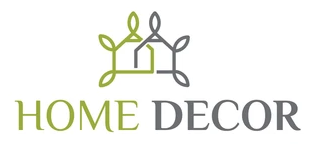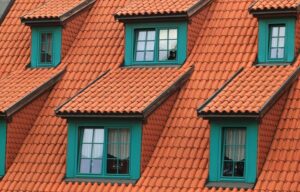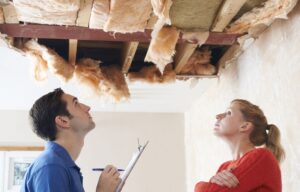When considering the construction and maintenance of a commercial building, one crucial component often overlooked until issues arise is the roof. Commercial roofing is a specialized field that deals with large-scale roofs designed to protect expansive structures from the elements. The importance of a well-designed and properly maintained commercial roof cannot be overstated, as it serves as the first line of defense against weather, structural damage, and costly repairs. In this comprehensive guide, we will explore the significance, types, materials, installation process, and maintenance of commercial roofing.
Understanding the Importance of Commercial Roofing
A commercial roof is more than just a covering; it is a vital component that shields a building, its contents, and occupants from environmental factors such as rain, snow, wind, and UV radiation. Unlike residential roofs, commercial roofs are typically larger, more complex, and subject to heavier wear and tear due to foot traffic, HVAC equipment, and other installations. It is important to learn about commercial roofing services.
A well-designed and properly installed commercial roof offers several key benefits:
- Protection: A sturdy roof prevents water intrusion, which can lead to interior damage, mold growth, and structural issues.
- Energy Efficiency: Proper insulation and reflective roofing materials can reduce heating and cooling costs.
- Durability: Commercial roofing materials are designed to withstand harsh weather conditions and last for many years.
- Safety: A well-maintained roof ensures the safety of occupants and workers within the building.
By investing in a high-quality commercial roofing system, property owners can protect their investments, minimize repair costs, and create a safe and comfortable environment for building occupants.
Types of Commercial Roofing Systems
Commercial roofs come in various types, each suited to different building designs, climates, and budgets. The choice of roofing system depends on factors such as roof slope, building usage, aesthetic preferences, and maintenance requirements. Some common types of commercial roofing systems include:
1. Flat Roof Systems:
- Built-Up Roofing (BUR): Consists of multiple layers of tar and gravel.
- Modified Bitumen: Asphalt-based sheets that are heat-welded or cold-applied.
- Single-Ply Membranes: Includes materials like EPDM (ethylene propylene diene monomer), TPO (thermoplastic polyolefin), and PVC (polyvinyl chloride), which are lightweight and flexible.
2. Metal Roofing:
- Standing Seam Metal Roof: Consists of vertical metal panels with raised seams.
- Metal Shingles: Theseresemble traditional shingles but are made of metal for durability.
3. Green Roofs:
- Covered with vegetation, green roofs provide insulation, reduce energy costs, and mitigate stormwater runoff.
4. Sloped Roof Systems:
- Commonly used in architectural designs and can include materials like asphalt shingles, tile, or slate.
Each type of roofing system has its advantages and considerations. For example, flat roofs are cost-effective and provide additional rooftop space for equipment, while metal roofs are durable and low-maintenance. You can read more about commercial roofing systems at https://www.understandconstruction.com/roofing-systems.html.
Materials Used in Commercial Roofing
Choosing the right roofing material is crucial for the longevity and performance of a commercial roof. Some popular materials used in commercial roofing include the following:
- Built-up Roofing (BUR): Consists of layers of tar and gravel or asphalt and is suitable for flat roofs.
- Single-Ply Membranes: Include materials like EPDM, TPO, and PVC, which are lightweight, flexible, and easy to install.
- Metal Roofing: Offers longevity and low maintenance, ideal for large commercial structures.
- Modified Bitumen: Asphalt-based roofing that is durable and can handle temperature fluctuations.
- Green Roofing Materials: Utilize specialized layers to support plant growth and drainage.
Each material has its advantages and is chosen based on factors such as climate, building structure, and maintenance requirements.
Commercial Roofing Installation Process
Installing a commercial roof requires careful planning, skilled labor, and adherence to building codes and safety standards. The installation process typically involves the following steps:
- Roof Inspection: Assessing the existing roof condition and making any necessary repairs or modifications.
- Material Selection: Choosing the appropriate roofing material based on the building’s needs.
- Substrate Preparation: Ensuring a clean, flat surface for proper adhesion of roofing materials.
- Membrane Application: Installing the chosen roofing membrane or system, including insulation and waterproofing layers.
- Flashing and Sealant Installation: Adding flashing details around penetrations and edges to prevent water intrusion.
- Final Inspection: Conducting a thorough inspection to ensure proper installation and adherence to specifications.
Professional roofing contractors have the expertise and equipment to complete the installation efficiently and effectively.
The Importance of Regular Maintenance
Regular maintenance is essential for preserving the integrity and performance of a commercial roof throughout its lifespan. Maintenance tasks should be performed at least twice a year and after severe weather events. Some key maintenance activities include:
- Roof Inspections: Checking for signs of damage, wear, or deterioration.
- Cleaning: Removing debris, leaves, and other obstructions from drains and gutters.
- Sealant and Coating Application: Reapplying sealants and coatings to protect against UV radiation and weathering.
- Repairing Damage: Promptly addressing leaks, punctures, or other issues to prevent further damage.
Neglecting roof maintenance can lead to costly repairs, premature roof replacement, and disruption of business operations. By investing in regular maintenance, property owners can extend the lifespan of their roofs and maximize their return on investment. Click here to get some tips on how to extend the lifespan of your roof.
Conclusion
Commercial roofing is a critical aspect of building design, construction, and maintenance. A well-designed and properly installed roof protects the building, its occupants, and valuable assets from environmental hazards and ensures operational efficiency. Whether you’re constructing a new commercial building or renovating an existing one, it’s important to work with experienced roofing professionals who understand the complexities of commercial roof systems.
By carefully choosing the right roofing system, selecting durable materials, and investing in regular maintenance, property owners can safeguard their investment and enjoy a safe, energy-efficient, and functional commercial space for many years to come. Commercial roofing is not just about covering; it’s about protecting and preserving the integrity of the building and everything within it.



